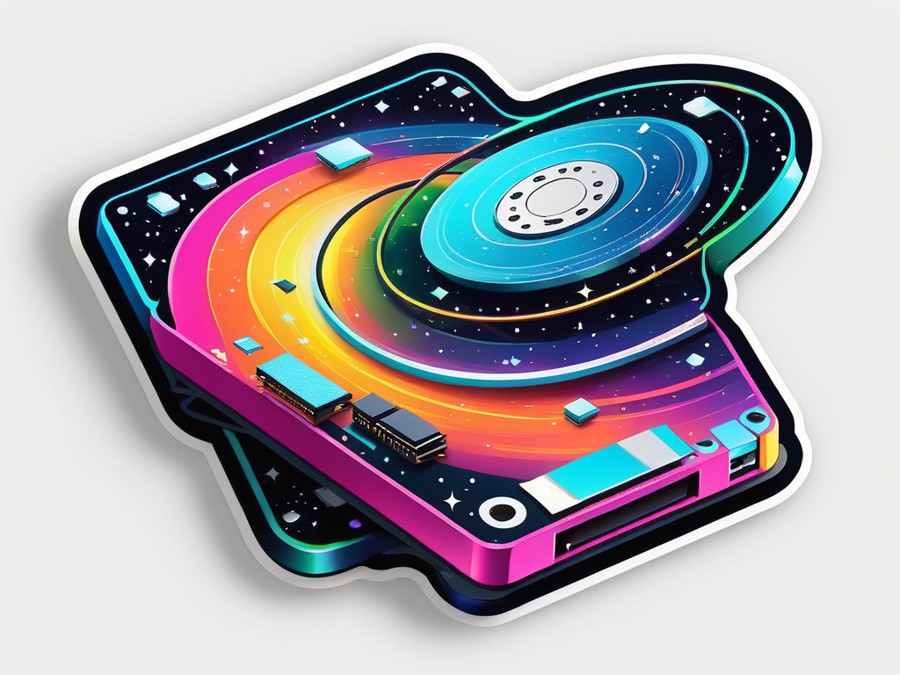· Charlotte Will · Hard Disk Conversion · 5 min read
How to Convert an Old Internal SSD/HDD into a Portable External Drive
This article contains affiliate links, which means that if you click on one of the product links and make a purchase, we may receive a small commission at no additional cost to you. We only recommend products and services that we believe in and think will add value to our readers.
Learn how to convert an old internal SSD/HDD into a portable external drive with our step-by-step guide. Upgrade your storage easily and affordably.

Are you looking to breathe new life into an old internal SSD or HDD? Converting it into a portable external drive can be a game-changer, offering increased storage capacity and versatility. In this article, we’ll delve into the process of converting an old internal SSD/HDD into a portable external drive, highlighting the challenges and solutions along the way.
The Problem with Old Internal SSDs/HDDs
One of the primary issues with old internal SSDs and HDDs is their limited use cases. Once removed from a computer, they become virtually useless unless you have the right tools and knowledge to convert them into something more practical. Additionally, the physical size and interface of these drives can make it difficult to integrate them into new systems or use them on the go.
My Experience with the Problem
I remember having an old internal SSD lying around after upgrading my laptop. It was still in good condition but had no use sitting idle. I wanted to repurpose it for backup and additional storage, but the lack of a suitable enclosure made it challenging. I needed a solution that was not only compatible with my SSD but also easy to use and reliable.
Introducing the BENFEI 2.5 Inch SATA to USB Tool Free External Hard Drive Enclosure
Enter the BENFEI 2.5 Inch SATA to USB Tool Free External Hard Drive Enclosure, a lifesaver for anyone looking to convert an old internal SSD/HDD into a portable external drive. This enclosure is designed to be user-friendly and efficient, making the conversion process a breeze.

You can buy this product directly from Amazon.
Pros and Cons of the BENFEI Enclosure
Pros:
- Tool-Free Installation: The enclosure allows for easy installation without the need for any tools.
- Compatibility: It supports both USB Type-C and Type-A, making it versatile for different devices.
- Optimized for SSD: The enclosure is optimized for SSDs, ensuring fast data transfer rates.
Cons:
- Limited to 2.5-inch Drives: It only supports 2.5-inch SSDs and HDDs, which might be a limitation for some users.
- Build Quality: Some users have reported that the build quality could be improved for durability.
- No Power Button: The lack of a power button might be inconvenient for some users who prefer manual control over power.
Who Benefits from the BENFEI Enclosure?
DIY tech enthusiasts, professionals who need additional storage on the go, and anyone looking to repurpose old internal drives will find this enclosure incredibly useful. It simplifies the process of converting an old drive into a portable external storage solution, making data management and backup more convenient.
Scenarios Where the BENFEI Enclosure Shines
- Backup Solutions: For professionals who need to backup large amounts of data frequently, this enclosure provides a reliable and portable solution.
- Additional Storage for Laptops: If you’re a tech enthusiast who likes to tinker with different setups, this enclosure allows you to add extra storage to your laptop easily.
- Data Transfer: For those who need to transfer large files between different devices, this enclosure ensures fast and efficient data transfer.
Step-by-Step Instructions to Use the BENFEI Enclosure
- Open the Enclosure: Carefully open the enclosure by sliding or unscrewing it, depending on the model.
- Insert the SSD/HDD: Place your 2.5-inch SSD or HDD into the enclosure, ensuring it fits snugly.
- Close the Enclosure: Securely close the enclosure, making sure it’s properly aligned.
- Connect to Your Device: Use the provided USB cable to connect the enclosure to your computer or laptop.
- Format the Drive (if necessary): Depending on your operating system, you might need to format the drive before using it.
- Start Using: Once formatted, your old internal SSD/HDD is now a portable external drive ready for use.
Quick Takeaways
- Converting an old internal SSD/HDD into a portable external drive can significantly extend its lifespan and utility.
- The BENFEI 2.5 Inch SATA to USB Tool Free External Hard Drive Enclosure simplifies this process with its tool-free installation and compatibility features.
- This enclosure is ideal for backup solutions, additional storage for laptops, and efficient data transfer.
- Always ensure proper formatting before using the converted drive to avoid compatibility issues.
Conclusion
Converting an old internal SSD/HDD into a portable external drive is not only a cost-effective solution but also an eco-friendly way to repurpose old hardware. The BENFEI 2.5 Inch SATA to USB Tool Free External Hard Drive Enclosure makes this process straightforward and efficient, providing a reliable storage solution for DIY tech enthusiasts. Don’t let your old drives gather dust—transform them into portable powerhouses with the right enclosure.
FAQs
Can I use this enclosure with a 3.5-inch HDD? No, the BENFEI enclosure is specifically designed for 2.5-inch SSDs and HDDs.
Is the enclosure compatible with both Windows and Mac? Yes, it is compatible with both operating systems. You might need to format the drive before use.
What is UASP, and why is it important? UASP (USB Attached SCSI Protocol) allows for faster data transfer rates compared to traditional USB protocols.
Can I use this enclosure with an external power supply? No, the BENFEI enclosure is designed to be powered directly through the USB connection.
How do I ensure my data is safe when using an external drive? Regularly backup your data and use encryption software to protect sensitive information.
Engage with Us!
Do you have any tips or tricks for converting old internal SSDs/HDDs into portable external drives? Share your experiences and insights in the comments below!




